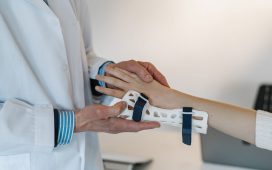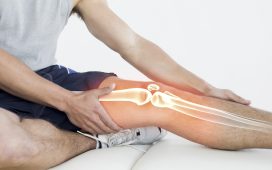Augmented reality (AR) is an important technology that has increasingly gained interest in both government and the private sector. AR systems are used in applications such as surgery, inspection of unsafe environments, and engineering. Augmented reality systems allow an extent of immersion that no virtual equipment can offer. The enhancement of wireless, computer, and vision has improved outdoor wireless systems to aid compound analysis, governing, and decision-making processes. Utilizing these systems in procedures helps in supplying on-the-spot (location-based services) and providing 2D and 3D geo-information. In the health sector, doctors use AR to locate the patient’s surgical site accurately and observe a fetus in real-time.
AR Components
Scene generator – it is the software or device responsible for rendering the scene.
Tracking system – is responsible for adequately aligning objects in the real and virtual worlds without compromising the illusion that the two coexist.
Display – it provides factors such as resolution, field-of-view registration strategies, and flexibility.
Medical Applications
The value of the 3D view of medically relevant anatomy is crucial and evident in the daily inclusion of 3D segmented images in computed tomography (CT) and magnetic resonance imaging (MRI). These images were previously displayed in 2D cross-sectional planes. Virtual reality (VR) and augmented reality (AR) has been a more effective way of displaying patient anatomy. Today, these technologies have significantly improved the medical field: training, pre-procedural planning, and therapeutic interventions.
AR in X-ray Imaging
Digital reality technologies assist health care delivery professionals in making critical decisions
and save a life. These technologies are potentially bringing overall healthcare costs down. Augmented reality has been greatly used in C-Arm x-ray imaging systems. C-Arm imaging is critical in surgical procedures and enables surgeons to monitor the anatomy level’s surgery processes. Invasive interventions entail repeatedly obtaining X-ray images from multiple anatomical views to verify the tool placement. Augmented reality is a crucial solution to C-Arm repositioning.
Mobile C-Arm X-ray imaging is mainly applied in guiding surgeries in operating rooms. Surfacing X-ray with optical images during surgery has been an efficient approach in overlaying useful data from different modalities and improving surgical processes’ accuracy. This also decreases the variability of surgical results, increases the surgeon’s performance reproducibility, and reduces radiation exposure. C-Arm calibration and pose are critical for surgical navigation and AR application in an operating room. Availability of refurbished and used C-Arm, short and long-term C-Arm rentals has enhanced imaging and reduced system maintenance and ownership costs. Surgical application efficiency, such as medical augmented reality in operations, requires C-am pose estimation and calibration.
Therapy
Virtual reality is used as part of therapy in psychology and rehabilitation medicine to diminish chronic and acute pain perception. The virtual world takes the patient’s attention from a painful stimulus. AR and VR facilitate telemedicine, whereby medical care or processes provided in remote locations can be displayed in an immersive holographic display. They enhance our view of medical information, providing an immersive communication interface that enhances the feeling of being physically present inpatient care provided through telemedicine.
AR and VR enable the virtual presentation of clinically suitable anatomy and physiology to all human senses in ways similar to natural counterparts. They help reduce major complications and increase the best possible surgical results in intraoperative technology.







